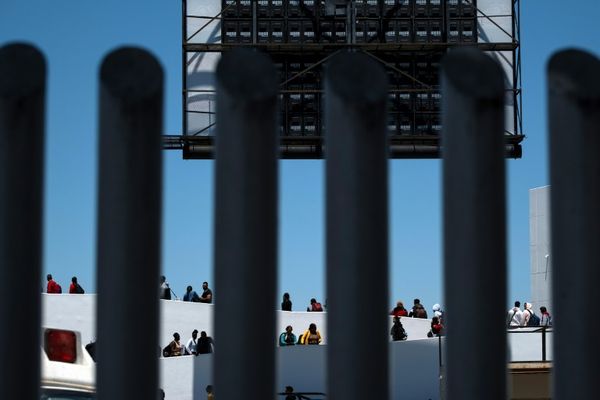
I lunch regularly with a group that calls themselves the GOM (Grumpy Old Men), where we collectively try to understand better what is happening in the world, sometimes with the help of guest speakers.
Tony Duffell, the current chairman of the group, was recently interviewed by the Newcastle Herald before the shutdown of the Liddell coal-fired power station near Muswellbrook. Tony spent almost two decades as an engineer and manager at Liddell and Bayswater, in addition to power station management roles in Asia, the Pacific and Africa.
We both agree Australia is unlikely to meet its climate reduction targets with renewable energy sources, and that the country will need different technologies to produce baseload power without creating greenhouse gas.
I sought Tony's view on using the site of the closed Liddell for the new small modular nuclear reactors (SMRs) to replace coal-fired power generation. He agreed that the location was perfect because of the existing high-voltage power connectors to the electricity grid and the large buffer zone of land initially created for the coal plants.
This site would be ideal and avoid the usual political games played in the past. On the eve of elections, mischievous political parties would print out maps for voters of the best site for a nuclear power plant in their federal electorate. This was designed to generate a widespread NIMBY (not in my backyard) reaction. Such map sites are nonsense because of the additional exorbitant costs, such as connection to the power grid.
Resistance to adopting nuclear technology for power generation has a long history in Australia, stretching back to the 1950s. Even now, the Prime Minister will not even consider a debate about creating a domestic nuclear power industry in the country.
This position is absurd, given that both political parties have recently signed up for AUKUS, where all the new submarines will contain nuclear reactors. This will automatically put Australia in the nuclear fuel cycle.
Anthony Albanese needs to listen more to South Australia's ALP Premier, Peter Malinauskas, who has forged a bi-partisan position in his state, to explore the merits of nuclear power following the May 2016 findings of SA's Royal Commission into the Nuclear Fuel Cycle (mining, production, and waste disposal).
For decades, other countries have solved their power needs and greenhouse gas challenges with nuclear energy. Since the 1950s, France has produced 70 per cent of its power from this source. Currently, 26 per cent of the European Union's electricity comes from nuclear power plants. In Sweden, its six nuclear reactors produce 30 per cent of its electricity. Until recently, there were plans to phase them out, but now Sweden wants to build additional nuclear plants amid ongoing concerns about energy security. Their Finance Minister, Elisabeth Svantesson, said: "We need more electricity production, we need clean electricity, and we need a stable energy system."
Obviously, a safe system is also needed. The nuclear accidents at Chernobyl (1986) and Fukushima (2011) would not occur with the current generation of SMRs. According to US President Joe Bidden: "they are affordable, game-changing technologies that are smaller, safer, and more efficient. SMRs have a minimal footprint, are quicker to build, are water-efficient, and don't need to be located on the coast."
They would be a good fit for Australia's electricity grid.
Ironically, if Australia had started nuclear power generation near Jervis Bay in NSW, using our uranium ore, as initially planned by the Gorton government in the late 1960s, our dependence on coal-fired power this century would not have been as significant, and our greenhouse gas challenge might not now be so overwhelming.
The possibility of a move towards baseload nuclear power in Australia was revived in this century by several of prime ministers, John Howard (2007), Tony Abbott (2015), Scott Morrison (2020), and most recently, Peter Dutton in his opposition budget reply speech (May 2023). It is a policy whose time has come.
Australia needs to find a path through its attitude and policy roadblocks to nuclear energy within the next decade, to reach net-zero emissions by 2050. Electricity demand is expected to rise by at least 50 per cent between now and the target date. Nuclear power is proven and scalable to take up the baseload gap left by the shutdown of coal-fired power stations in the Hunter Valley, such as Liddell. This will safely reduce greenhouse emissions and keep the lights on.
It is time for the federal government's power generation policy to catch up and move into the 21st century.
Newcastle East's Dr John Tierney AM is a former chair of the Senate Standing Committee on the Environment and Communication
WHAT DO YOU THINK? Join the discussion in the comment section below.
Find out how to register or become a subscriber here.







